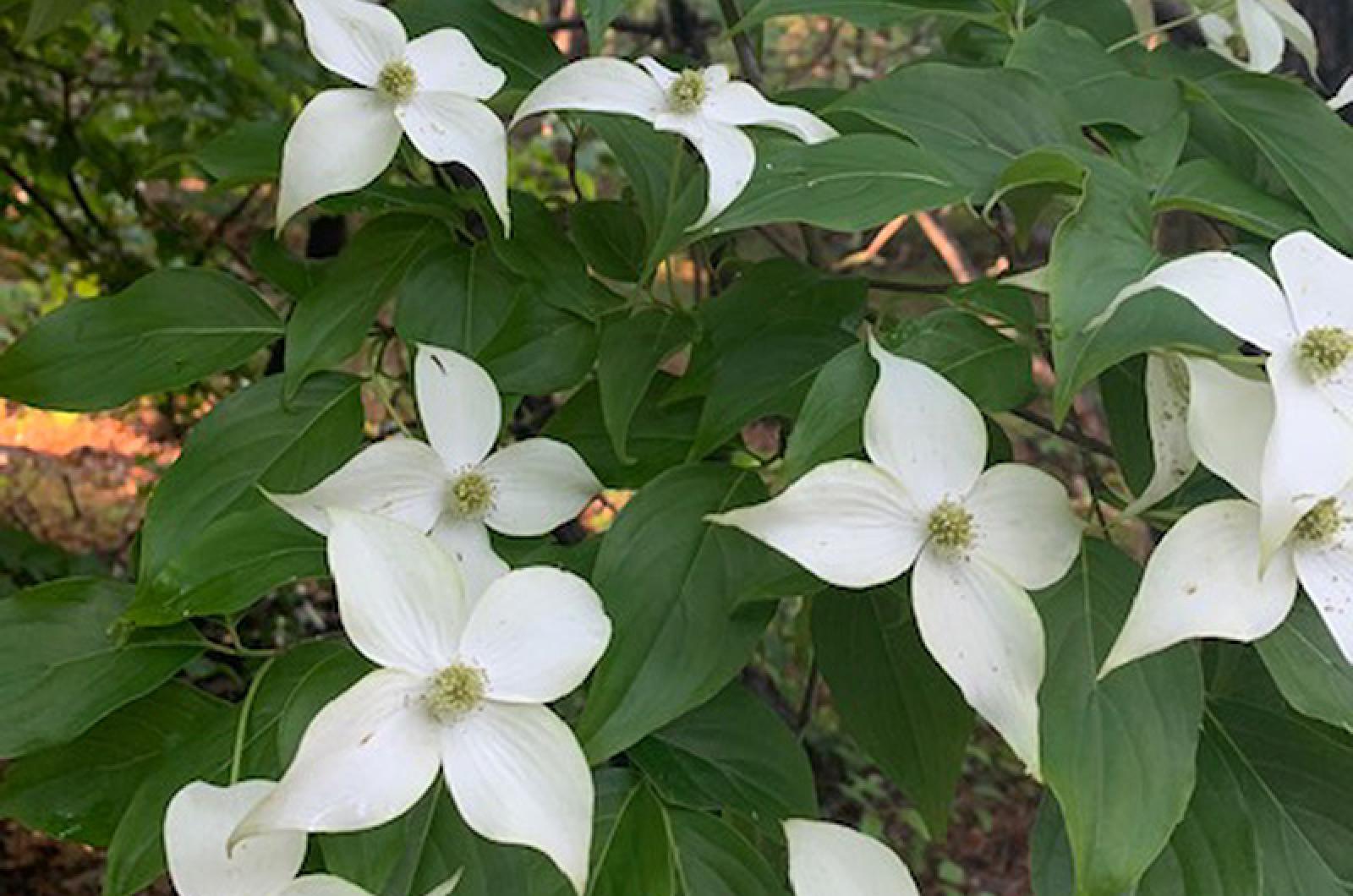They were dog-gone near perfect this year.
A group of plants known as dogwoods have put on quite a seasonal show. You couldn’t have missed this terrific tree because it bloomed spectacularly, showing off a fervent flowering of four-petalled white and pink blossoms.
These species, in the genus Cornus, have had a very robust flowering set, easily surpassing the last few years and earning a best-in-show ribbon this year. Why so bold and beautiful this time around?
Biennial bearing could be one cause. This characteristic describes a plant that has multiple years of inconsistent reproduction. A plant with this trait will yield a strong crop one year and a weak one the following year, making it an unpredictable producer. Typically a great flowering season is followed by an excellent berry set, with much energy expended in the process. Thus the following year a less-than-stellar — perhaps even sparse — bloom is expected. We’ve all had our ups and downs and the dogwoods are no exception.
Moisture is another factor for fantastic flower production. With all of the spring rain we’ve had, it makes sense that it was a stupendous year for dogwoods. The (rain) cloud’s silver lining, it seems.
No matter the fickle state of this tree’s affairs, it is and has been a perennial and historic favorite.
One legend suggests that Pontius Pilate, the Roman prefect, preferred this wood for making crosses for the crucifixion of criminals and others. During that time, lore relates, the dogwood was tall and straight, like oak trees, and thus perfect for this use. But once it was used for Jesus’s crucifix the dogwood was cursed, and to prevent it from ever being used in this way again the tree became twisted and slender, a symbol of his sacrifice. What’s more, the four-part flowers are in the shape of a cross, and their edges can be tinged with red, supposedly as a reminder to the faithful.
That seems an unholy amount of symbolism to heap onto one innocent tree species, especially since this story does not appear in the Bible. As the tree is not even native to the Holy Land, take the legend with a decent-sized grain of salt.
Dogwood do have other notable uses. The wood was used to make tools in the southern United States. Wedges for rail spilling, shuttles for spinning mills and tool handles were all commonly made from dogwood.
It also has medicinal value, having been used for everything from pain, dizziness, weakness and excessive sweating to uterine bleeding and incontinence. Even fever and malaria are said to be effectively treated with dogwood dosing.
Dogwood tea that is a substitute for chamomile was brewed, and the berries were soaked in brandy to make a passable bitter.
This year we’ve gotten to admire the blossom bonanza. Remember, however, that next year we should expect another sub-par spectacle of flowers. Since their shows come in cycles, having to wait for the next dazzling display will allow us to appreciate it all the more. With the tree’s cyclical nature established, maybe we’ll need to settle for that old saw: there’s no chance to teach these old dogs new tricks.
Suzan Bellincampi is director of the Felix Neck Wildlife Sanctuary in Edgartown, and author of Martha’s Vineyard: A Field Guide to Island Nature and The Nature of Martha’s Vineyard.




Comments
Comment policy »